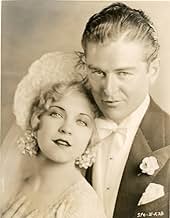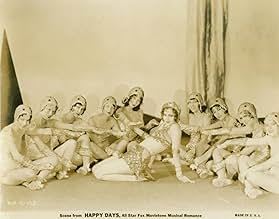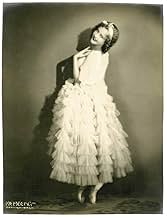Margie, a singer on a showboat, decides to try her luck in New York although she's in love with the owner's grandson. She is successful, but suddenly she hears that the showboat is in deep f... Read allMargie, a singer on a showboat, decides to try her luck in New York although she's in love with the owner's grandson. She is successful, but suddenly she hears that the showboat is in deep financial trouble, and she summons all of the boat's former stars to unite and put on a big... Read allMargie, a singer on a showboat, decides to try her luck in New York although she's in love with the owner's grandson. She is successful, but suddenly she hears that the showboat is in deep financial trouble, and she summons all of the boat's former stars to unite and put on a big show to rescue it.
- Awards
- 2 wins total
Featured reviews
The Harry Lauder (10 Nov 1902, Hamilton, Lanarkshire, Scotland, - 5 Dec 1951, Sydney, Australia, youngest surviving son of Matthew Currie Lauder) who appeared in "Happy Days" was Sir Harry's nephew, and also named Harry.
Harry II, as he liked to be known, was a child musical prodigy with a rich tenor's voice. Following The Great War his famous uncle, Sir Harry Lauder, sent him to Europe for a musical education, including Milan and Paris, where he had vocal training, and he subsequently sang in minor roles in Paris and Britain in Puccini and light opera. He then went to Chicago, U.S.A., where he appeared with the opera company, also undertaking training as a conductor. He then joined the U.S. Gilbert & Sullivan Rep.Co., and toured widely (notably in Richmond, Virginia.), both singing and conducting.
He subsequently conducted Fox Movietone News for 18 months before William Fox suggested he come to Hollywood to work for him there. He then moved to Los Angeles and set up a teaching studio in Glendale. It is unclear what he did for Fox in Hollywood, although he took minor roles in "Happy Days" (1930) (chorus) and several other Fox films, which seem to have gone largely unnoticed.
Show actually is not just a revue, but revolves around a story. White's father, Charles E. Evans is captain of a Show Boat. It's going broke and he can't pay the piper. She decides she's going to New York to the night clubs and round up all the performers who had their beginnings with her pop on the boat and bring them back to the boat for a show to save the boat and her pop. Of course she only needs to go to one night club - at least it looks that way in the movie - and everybody wants to do his or her bit. It evidently works, because when the film ends, it's after the last number, with no thank yous, good byes, or "It's a success!". It just ends.
Best number by far is the Ann Pennington dance "Snake Hips", also with Sharon Lynn, followed by the Dixie Lee rendition of "Crazy Feet". Farrell and Gaynor sing a song that probably should have remained unsung. McLaglen and Lowe do a routine that jokes about their Quirt and Flagg routines in their soldier movies, though it never mentions Quirt and Flagg, only McLaglen and Lowe. Lots of other numbers and routines. Only one that was just plain stupid, and that was El Brendel. I know, some just love the guy. Oh, well, to each his/her own.
Highly recommended for those interested in the early sound musicals. This is basically Fox's answer to all the revues done in those first couple of years by the different studios. It's quite good. 80 minutes or just a few more. It won't grate if you know what you're getting into. For those only looking for "Singin' in the Rain" or "Cabaret", stay away or sit back and learn. If you look at the viewer ratings on the IMDb, they range from 1 star to 9. Most are 7 or 8, so most have enjoyed it; but there are certainly exceptions. For the record, the sound and the photography are spot on, not so much the creaky early stuff. Some of the songs aren't perfect in any sense by modern standards sound-wise, but for the day are quite decent. Much of the revue style music is straight on camera shots, but there are a few that seem precursors to Busby Berkeley. This is also the second film released in 70mm wide screen. It's the debut films of both Marjorie White and Betty Grable.
Correction. A cast list does appear just before the start of the musical numbers. I obviously missed this during the first viewing!
Yes, much of it is in blackface. Performers in solo and specialty numbers have the make-up removed, and the last twenty minutes or so is performed without the hated shoe polish. This is a good one, not for the number in which Edmund Lowe and Victor Mclaglen sing about how they really like each other, or for Charles Farrell and Janet Gaynor singing the forgettable "We'll Build A World Of Our Own." But Broadway star Charles MacFarlane has a fine singing voice; Tom Patricola does a dynamite eccentric dance; and to watch Ann Pennington and Sharon Lynne dance "Snake Hips" in very revealing costumes is a treat.
This was the second movie shot in Fox's Grandeur Process, an early 70mm format. Unhappily, the copies at are available are in standard format and rather blurry. But there are some surprising techniques, like a Busby Berkeley shot and extended sequence of single dancers in full body length, well before these techniques became standard.
It's one of those movies that the major studios made in this brief period, showing off their stars in song and dance, whether they could sing, dance or not. Given the inherently mixed bag nature of the genre, this is a pretty good example of the revue format.
Did you know
- TriviaThe second film released in 70mm widescreen (La piste des géants (1930) was the first).
- Alternate versionsFilmed and released in two versions: standard (35 mm) and widescreen in the Grandeur process (70 mm). For its premiere showing, the widescreen version played at the Roxy Theatre in New York City, and was the first film ever shown entirely in widescreen. No print of the widescreen version is known to exist.
- ConnectionsFeatured in Biography: Betty Grable: Behind the Pin-up (1995)
- SoundtracksWe'll Build a Little World of Our Own
(uncredited)
Music by James F. Hanley
Lyrics by James Brockman
Copyright 1930 by Red Star Music Co. Inc
Performed by Janet Gaynor and Charles Farrell
Details
- Runtime1 hour 20 minutes
Contribute to this page





































